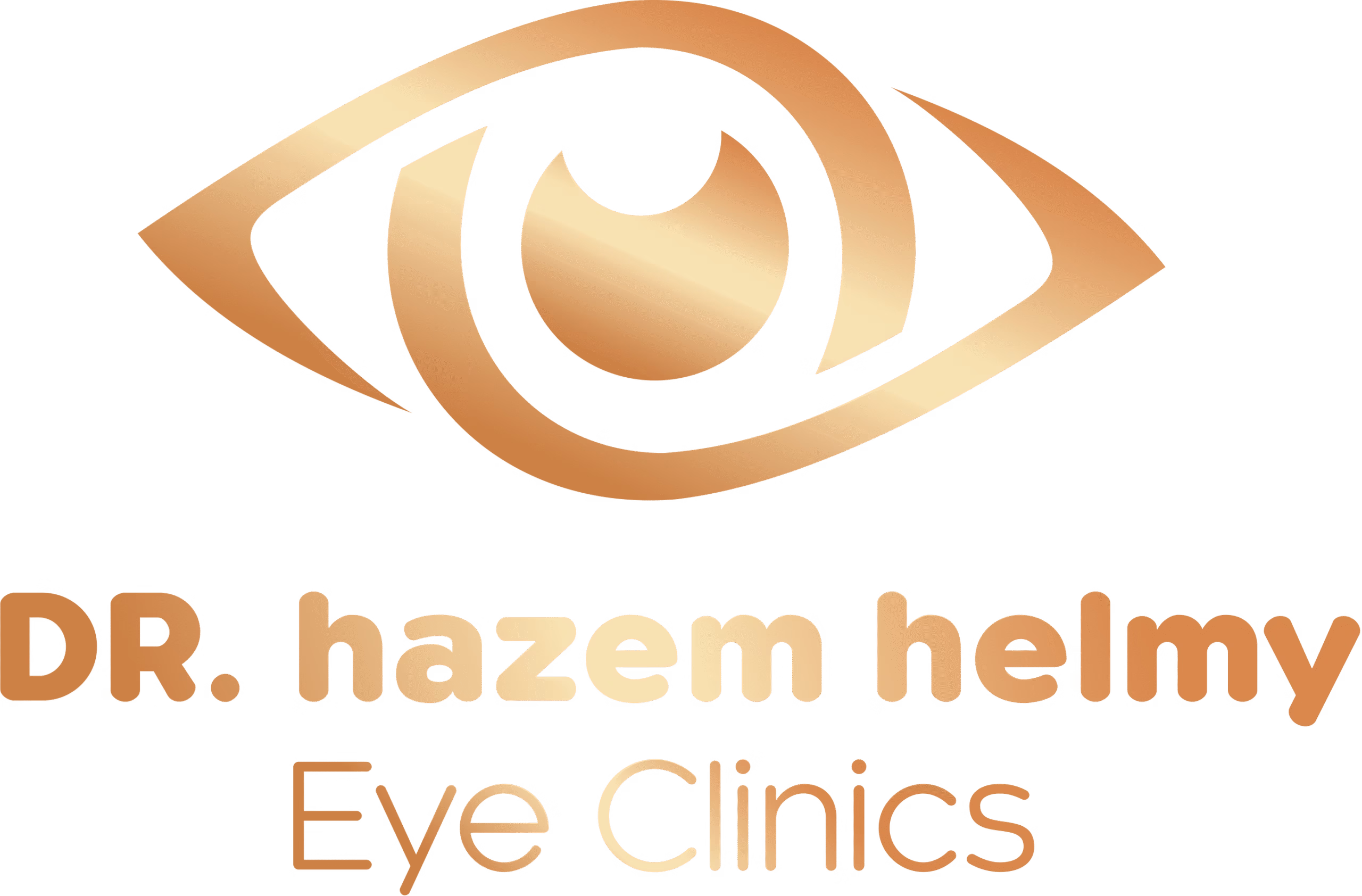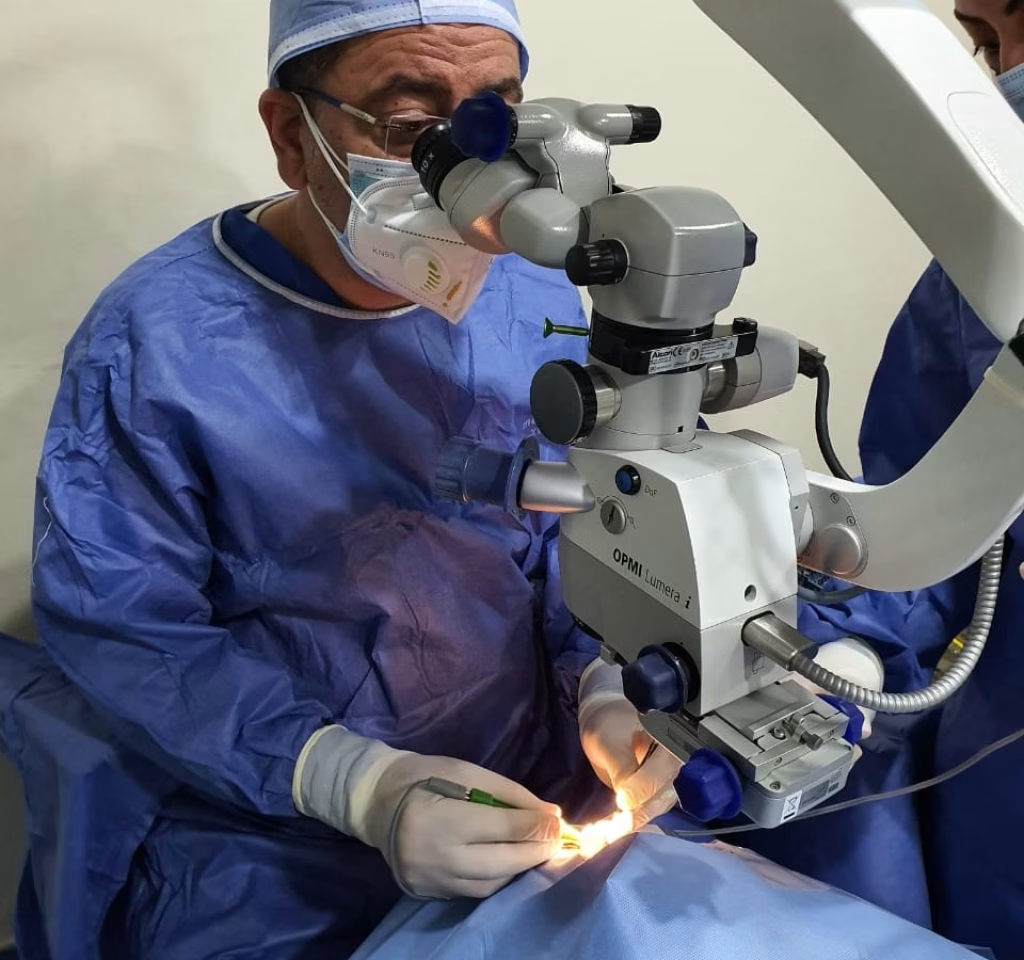
Treatment and surgery of congenital glaucoma for children
Treatment and surgery of congenital glaucoma for children :
Congenital glaucoma (Congenital Glaucoma) is a rare condition that affects children from birth or during the first years of their life, and directly affects the development of eyesight, which makes early diagnosis and treatment extremely important for the preservation of vision.
What is congenital glaucoma
It is a type of glaucoma that occurs as a result of a congenital defect in the formation of the corner of the eye responsible for the drainage of internal fluids, which leads to high intraocular pressure from the first months of a child's life, and symptoms may appear early.
Symptoms that parents may notice:
Abnormally enlarged eye size (eyeball hypertrophy)
Increased secretion of tears
Extreme sensitivity to light
Clouding or opacity in the cornea of the eye
Constant eye rubbing or a child's discomfort from light
The importance of early diagnosis
In cases of congenital glaucoma، Every day makes a differenceDelays in diagnosis and treatment can lead to permanent damage to the optic nerve and irreversible vision loss.
How does Dr. Hazem Helmy treat these cases
Dr. Hazem Helmy has extensive experience in dealing with congenital glaucoma cases, using the latest pediatric-friendly surgical techniques, with careful monitoring of eye growth and vision development.
1. Thorough examination and evaluation
Conducting a comprehensive examination under the influence of narcotic drugs (Examination Under Anesthesia – EUA)
Accurately measure intraocular pressure
Examination of the cornea and optic nerve
Photographing the corner of the eye using special devices for children
2. The right surgical plan
Surgery is often the primary solution in these cases, and options include:
Canalectomy surgery (Trabeculotomy)
Angle-opening surgery and fluid drainage (Goniotomy)
الجراحة المشتركة (Trabeculectomy + Trabeculotomy) In advanced cases
In some cases, they are used Precision drain valves To control intraocular pressure
3. Long-term follow-up
Follow-up of eye growth and vision development
Treat any possible complications such as myopia or strabismus
Periodic examinations of eye pressure and optic nerve
A letter to parents
If you notice any abnormal changes in your baby's eye, don't wait — An early diagnosis can preserve his eyesight for life.
Dr. Hazem Helmy provides integrated care for children with congenital glaucoma, within a safe and specially prepared environment for young people.
How do I monitor my child's condition after the operation
🔹 Regular follow-up is very necessary, it includes:
Checking eye pressure
Assessment of the optic nerve
Follow-up measurement of vision and visual development
Dr. Hazem Helmy provides a customized follow-up schedule for each case, with precise instructions for parents to monitor for any abnormal signs at home.
Frequently asked questions
Parents can recognize the early symptoms of congenital glaucoma in children by noticing some visible signs that may indicate an eye problem. These symptoms can be relatively pronounced if they are carefully observed. Here are the main symptoms that parents should pay attention to:
Enlarged eye size : one of the main and characteristic symptoms of congenital glaucoma is that the child's eyes may appear larger than normal or that one eye may be larger than the other, as a result of increased intraocular pressure, which leads to its enlargement (Buphthalmos) 1.
Excessive lacrimation: children with congenital glaucoma may experience abnormal persistent lacrimation due to irritation caused by the condition.
Extreme sensitivity to light : children with this condition show extreme sensitivity to light (Photophobia), as they feel disturbed when exposed to bright lights.
Blurry or cloudy eyes: the cornea of the eye may appear cloudy or not fully transparent, which affects the clarity of vision in the child.
Difference in the size of the eyes : in some cases, there may be a clear difference in the size of the eyes between them, in which one eye is larger than the other due to high intraocular pressure in only one of them.
Constant discomfort or crying : due to pain or discomfort caused by the condition, the baby may be more crying and upset for no other apparent reason, especially when looking directly at the light source.
Blurry vision : although the child cannot express vision problems directly, this symptom can be noticed by the child's difficulty concentrating on objects or not responding to visual stimuli as expected.
Corneal bulging: increased pressure inside the eye can lead to swelling of the cornea, making it look abnormal or cloudy.
If parents notice any of these symptoms, it is very important that they immediately consult a Specialist Ophthalmologist to conduct the necessary examinations, make sure the health of the eyes and avoid any possible complications. Early diagnosis is a crucial step in treating congenital glaucoma and improving treatment outcomes
Prevention of congenital glaucoma faces a great challenge due to its genetic nature in most cases, since there is no known way to completely prevent its infection. However, some measures can be taken to reduce the risk or detect it early to deal with it before it causes permanent damage. Here are the most important tips:
Periodic eye examinations:
Parents with a family history of glaucoma or other eye diseases should take care of periodic examinations of children from birth to early childhood years. An early examination can help diagnose the condition before any serious complications occur.
Monitor early symptoms:
Although there is no direct way to prevent congenital glaucoma from occurring, noticing early symptoms such as enlarged eye size, excessive lacrimation, extreme sensitivity to light, and cloudy eyes can contribute to early diagnosis and appropriate treatment.
Genetic care and genetic counseling:
If there is a known family history of congenital glaucoma or other genetic diseases, it is advisable to consult genetics specialists for advice on pregnancy options and genetic screening before or during pregnancy.
Eye protection from injuries:
Although injuries are not the main cause of congenital glaucoma, protection from injuries can be useful in preventing the condition from worsening or the appearance of other eye-related problems. The use of protective glasses when needed can be part of a general prevention strategy.
Health awareness:
Raising awareness among parents about the importance of eye health in children, especially in families with a family history of eye diseases, can play an important role in promoting eye care and encouraging seeking medical help when any abnormal signs appear.
Management of concomitant diseases:
Although congenital glaucoma is often independent of other diseases, maintaining the health of the mother during pregnancy, including controlling chronic diseases such as diabetes and hypertension, may contribute to reducing possible risks to the health of the fetus.
Given the genetic nature of congenital glaucoma, the primary focus should be on early detection and prompt treatment to achieve the best results. Regular check-ups for children, especially those who have risk factors such as a family history of glaucoma, are the most important step to ensure eye health and prevent vision loss.
If the condition is detected early, surgical interventions or drug treatments can be very effective in reducing the long-term impact of this condition


To communicate
Book now
Do you have vision problems or need an eye exam Book your appointment now with the best ophthalmologists! We provide you with high-quality medical services in a comfortable and safe environment
Working hours
- The gathering clinic: on Sundays and Tuesdays from 2 to 9 pm
- Giza clinic: Saturday, Monday and Wednesday from 5 to 11 pm

